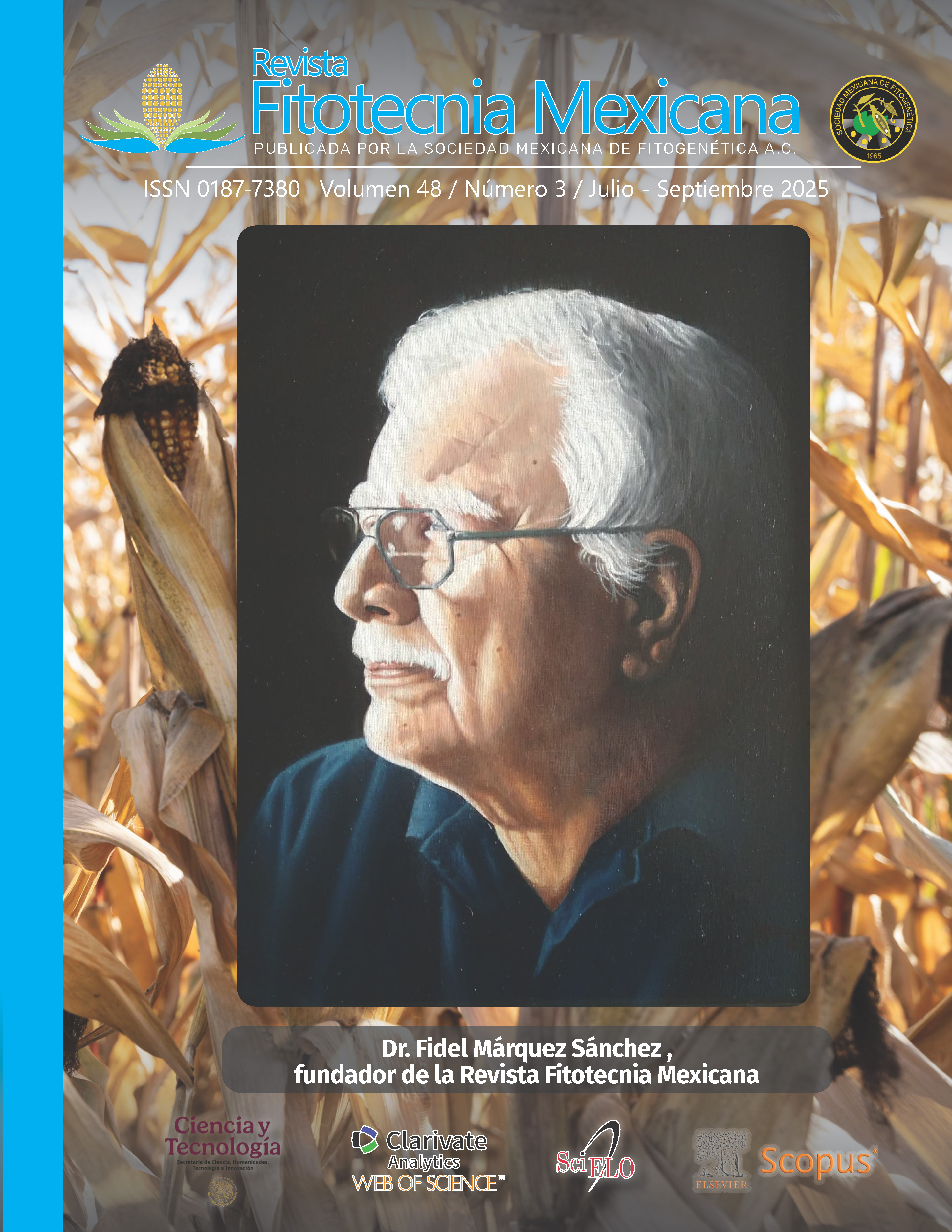MORPHOLOGY AND YIELD OF MAIZE PLANTS OBTAINED BY IMMATURE EMBRYO CULTURE AND BY SEEDS
Main Article Content
Abstract
Maize is traditionally propagated by seed, but advances in techniques such as in vitro culture of immature embryos have generated interest due to their potential advantages, including shorter time to obtain elite genotypes, reduction of seed-borne diseases, and acceleration of breeding cycles. Few studies have evaluated the performance of plants derived from these two propagation methods. This research aimed to compare the morphological characteristics and yield of maize genotypes propagated from seeds and from immature embryos in order to estimate possible differences between the two methodologies. An experiment was conducted with 14 maize populations obtained from the crossing of lines E60-10 and CML-529. These populations were obtained from both seeds and immature embryos and were planted in a randomized complete block experimental design. The variables evaluated included days to male flowering (DMF) and female flowering (DFF), plant height (PH, cm), number of leaves (NL), leaf area index (LAI) and grain yield (GY, kg ha-1), among others. Results showed significant differences in days to flowering, biomass production and yield when comparing plants propagated from seeds to those derived from immature embryos. Populations P2, P1 and RC2, obtained from immature embryos, increased their LAI by 23.9, 8.0 and 7.4 %, respectively, in addition to presenting increases in yield of 44.5, 4.8 and 16.5 %, respectively. This study provides information that suggests that maize plants obtained from immature embryo culture did not match the response obtained from seeds generated through hand pollination.

